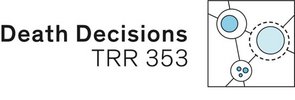B05: Oxidative cell death decisions in response to localized peroxide challenges
Project Leader: Marcus Conrad
The excessive occurrence of “reactive oxygen species” (ROS) may cause oxidative cell death and tissue injury, yet the precise underlying mechanisms remain to be elucidated. By taking advantage of a chemogenetic tool, we are able to generate scalable amounts of ROS in a spatiotemporal manner, and thereby characterize the downstream events causing cell death. Our preliminary work has successfully established this system and identified that ROS derived from certain subcellular sites are a likely trigger of ferroptosis. Here, we will provide a comprehensive and comparative analysis to test this system in the context of the main professional redox systems in mammalian cells. In the first part, the chemogenetic tool will be applied to cells with specific defects in distinct redox systems. To this end, cells will be challenged with subcellularly generated ROS and their cellular responses will be investigated focussing on oxidative cell death decisions. In the second part, the chemogenetic tool will be applied to mouse liver and upon spatiotemporal ROS challenges the outcome of liver damage will be thoroughly analysed. In the third part, liver-specific disruption of professional redox systems will be accomplished based on the mouse model described in the second part, whereby the in vivo roles of these redox systems against spatiotemporal ROS challenges will be identified. All these models will undergo a detailed characterization using genome-wide CRISPR screens, transcriptomics, proteomics, and (epi)lipidomics analysis. With these novel tools and studies, we expect that novel genes involved in the regulation of oxidative cell death will be identified in addition to the establishment of mouse models with controllable oxidative damage in liver tissue.


